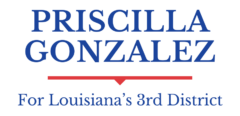Coastal Erosion and Land Loss
The district’s coastal regions are losing land quickly as a result of erosion, subsidence, and rising sea levels. The ecosystem, the local economy, and the way of life for those who depend on coastal resources for their livelihoods and leisure are all at risk because of this.
Solution
Coastal erosion and land loss in the 3rd District of Louisiana present complex challenges that require comprehensive solutions. Here are several strategies that can be implemented to address these issues:
Coastal Restoration Projects
Coastal landmasses can be rebuilt and protected by funding extensive coastal restoration initiatives like shoreline stabilization, barrier island repair, and marsh formation. These initiatives seek to lessen the effects of erosion and storm surges while recreating ecosystems that offer essential habitats for species. They also strive to replicate natural processes.
Wetland Preservation and Management
In order to maintain natural barriers against erosion and land loss, it is imperative that existing wetlands be preserved and managed. Enacting laws that shield wetlands from pollution and development can contribute to the preservation of these important ecosystems and the protective roles they play.
Coastal Protection Infrastructure
Levees, seawalls, and floodgates are examples of coastal protection infrastructure that can be built and maintained to assist protect coastal settlements from erosion and storm surge. Protecting coastal areas and reducing land loss require investments in resilient infrastructure that can resist the effects of climate change.
Sustainable Land Use Practices
The loss of priceless coastal land can be reduced by promoting sustainable land use practices like smart growth planning, coastal setback limits, and land use zoning rules. Communities can lessen the effects of land loss by encouraging appropriate development and minimizing actions that lead to erosion.
Community Engagement and Education
Including local people in outreach, education, and participation initiatives related to coastal management and restoration might help them feel more responsible for the resources along the coast. Long-term success depends on giving locals the tools they need to actively safeguard and preserve their coastal environment.
Collaboration and Funding
To effectively implement solutions for coastal erosion and land loss, collaboration among government agencies, nonprofit organizations, academic institutions, and commercial players is essential. Planning, carrying out, and maintaining coastal restoration and preservation initiatives require sufficient money from federal, state, and municipal sources.
Infrastructure Needs
Roads, bridges, and levees comprise the aging infrastructure, which is a major burden requiring significant investment and continuous upkeep. These vital parts of our infrastructure network have suffered damage over time from a combination of environmental conditions and wear and tear. It is critical to address this issue since the state of our infrastructure has a direct bearing on the district’s inhabitants’ safety, general well-being, and economic viability. We can safeguard our communities and guard against the possible threats posed by failing infrastructure by giving infrastructure upgrades first priority and setting aside funds for the upkeep and repair of old roads, bridges, and levees.
Furthermore, the district’s economic development depends on infrastructure spending. The efficient flow of people and products is made possible by well-maintained roads and bridges, which boost regional companies and draw in new investment prospects. Furthermore, strong levee systems offer vital flood protection, preventing the disastrous effects of flooding disasters from harming important infrastructure, residences, and commercial buildings. We can improve the general standard of living for citizens while fortifying the groundwork for long-term economic growth and success by investing in infrastructure.
Solution
Effective land use planning is essential for regulating expansion, safeguarding natural resources, and fostering sustainable development in Louisiana’s 3rd District. Several solutions can be applied to address land use planning challenges:
Comprehensive Planning
Creating comprehensive land use plans that establish a vision for future growth and development can aid in decision-making and encourage coordinated development throughout the area. These plans should take into account population trends, infrastructural demands, environmental resources, and community interests.
Zoning Regulations
Implementing zoning regulations that assign appropriate land uses to different locations can assist prevent incompatible development and safeguard sensitive environmental areas. Zoning rules can specify permissible uses, building densities, setbacks, and other development standards to ensure that new development is compatible with existing land uses and environmental circumstances.
Conservation Easements
Establishing conservation easements on sensitive lands, such as wetlands, floodplains, and wildlife habitats, can help protect them from development and assure their long-term preservation. Conservation easements are voluntary agreements between landowners, conservation organizations, or government agencies that limit future development while permitting suitable land uses like agriculture or recreation.
Transfer of Development Rights (TDR)
Implementing transfer of development rights programs can help protect significant natural areas by allowing landowners to sell development rights from their properties to developers in specified receiving zones. TDR schemes incentivize landowners to protect property while allowing development in appropriate areas, encouraging both conservation and development goals.
Smart Growth Principles
Embracing smart growth principles such as compact development, mixed land use, and walkable communities can help promote long-term development patterns that limit sprawl, lower infrastructure costs, and improve quality of life. Smart growth policies prioritize the effective use of land, the protection of open space, and the development of dynamic, living communities.
Community Engagement
Engaging local residents, stakeholders, and community organizations in the land use planning process is essential for ensuring that plans reflect community priorities and values. Soliciting opinion through public meetings, seminars, surveys, and other forms of outreach can help establish consensus and support for land-use decisions.
